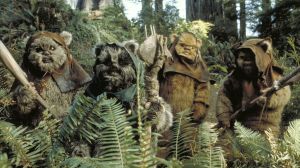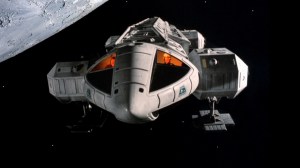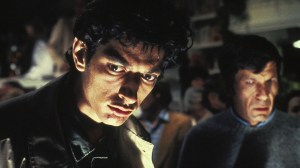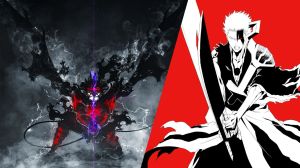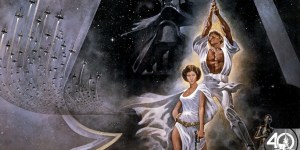20th Century Fox has been bringing the X-Men to the big screen (for better or worse) for over 15 years.
Videos by ComicBook.com
In 2017, Fox will for the first time attempt to bring their X-Men franchise to the small screen. Legion will debut on FX, introducing television audiences to David Haller (Dan Stevens), Professor X’s mentally unstable and incredibly powerful mutant son.
The Legion trailer looks very promising but we have to admit, a deep cut like Legion wasn’t the first character that came to mind when news began surfacing of an X-Men television series being in the works. That isn’t just because Legion is such an obscure character, but also because there are so many other great X-Men characters that seem like they would make genuinely fantastic television protagonists.
We know that Fox’s Hellfire Club TV series was kiboshed, but we also know that they’ve got another X-Men television series in the works. In the hopes that Legion and this still unnamed second series are successful, and that Fox continues marching mutants onto our television sets, we began considering what other X-Men characters we think are most deserving of the television treatment.
Here are our five top choices for characters to be featured in future X-Men television series.
Legion will premiere on FX in 2017.
Jamie Madrox, The Multiple Man (X-Factor)
The pitch: X-Men meets Joss Whedon’s Angel
Peter David’s mid-2000s run on X-Factor took the tried and true private investigations conflict engine and it applied it to the world of mutants.
The series saw the Multiple Man, Jamie Madrox, bringing together a team of mutant B-listers – the roster included Wolfsbane, Strong Guy, M, Rictor, Siryn and Layla Miller – to form X-Factor Investigations, a detective agency specializing in cases involving mutants. Essentially, X-Factor was to X-Men what Angel was to Buffy the Vampire Slayer.
Much like Angel did with Buffy the Vampire Slayer, David took these characters that the core X-Men narrative didn’t have any use for anymore and turned them into a found family. The cases brought to X-Factor Investigations may have driven the plot forward, but fans were reading because they cared about the characters and were invested in their relationships.
Madrox himself is a uniquely relatable character. David expanded Madrox’s duplicating powers by revealing that Madrox has sent several dupes out into the world to absorb knowledge on all manner of subjects. A side effect was that Madrox could now see practically any issue, debate, or choice from every point of view, leaving him in a near constant state of crippling self-doubt and indecision. Watching him grow into a true leader for X-Factor’s band of misfits was a rewarding narrative experience.
Of all the X-Men comics that have ever been published, X-Factor may be the most natural fit for television. It’s a wonder that Fox hasn’t pursued a television adaptation already

Bishop (District X)
The pitch: X-Men meets Luther and/or The Wire
Most fans remember Bishop from X-Men: The Animated Series as the time-travelling mutant from the future who came back to the present day to stop the X-Men traitor whose actions would lead to the creation of the dystopian future timeline from which Bishop came.
What sometimes gets lost in the science fiction bombast of Bishop’s narrative purpose is that he was also a police officer, a fact that was revisited much more explicitly in the 2004 series District X.
District X saw Bishop signing up to become an FBI agent after the fringe X-Men team he had previously been a part of rejoined the rest of the X-Men at Xavier’s School for Gifted Youngsters. Bishop was assigned to solve crimes in “Mutant Town,” an overpopulated, impoverished area of Manhattan inhabited mostly by mutants, especially mutants whose mutations would not allow them to pass for human.
Television networks love police procedural, which makes a story about an X-Man who is an FBI agent an easy fit for television, but the setup here offers so much more potential than simple, clean, episodic crime stories.
The mutant metaphor has always been used to represent the disenfranchised and the outcasts on a superhero level. The “Mutant Town” setting, along with Bishop being a lead character of color, would allow a careful showrunner and a talented writers room to explore that metaphor as it relates to modern minorities and their relationships with police and other powerful establishments. It is tough to draw a comparison to The Wire because so much of that series’ power comes from it being set in reality, but the idea isn’t entirely dissimilar.
On the other side of things, Bishop’s series could be given a science fiction twist. Fans will remember that Bishop lost key parts of his memories when he returned to the present day. A Bishop series based on the District X premise could be given a powerful long-term narrative drive if Bishop slowly remembers when and where he came from over the course of one or more seasons, which could drastically alter the show’s status quo.

Blink (Exiles)
The pitch: X-Men meets DC’s Legends of Tomorrow
Blink is a pretty obscure character from X-Men lore. She did make an appearance in X-Men: Days of Future Past, played by Fan Bingbing, but she was mostly there because her mutant ability to open portals in space made for some incredible action sequences.
Blink was originally introduced in the “Phalanx Covenant” X-Men comics event, but that version of Blink is barely recognizable to most fans today. She was frightened, couldn’t control her powers, and died before the story ended.
The original Blink was eventually resurrected, but the versions of Blink that is best known and best loved by fans was actually created during the “Age of Apocalypse” event. In that dystopian alternate timeline, Blink was a member of Magneto’s X-Men and was particularly close to fellow team member Sabretooth. Blink even proved popular enough to star in her own four-issue prequel limited series.
Blink truly came into her own in the Exiles series. The Exiles were a team of characters from various alternate timelines in the Marvel multiverse, including the Age of Apocalypse. The team was tasked with righting wrongs that threatened all reality across the timeline, with wounded and fallen team members being replaced by others from elsewhere in the multiverse. Blink quickly came to lead the team.
DC’s Legends of Tomorrow on The CW has already proven that this kind of multiversal, adventure-heavy series can work with the right chemistry between cast members. Put a great female actress at the series’ center as Blink, and let audiences start dimension hopping across the X-Men side of the Marvel multiverse.

X-23 (NYX/X-23/All-New Wolverine)
The pitch: X-Men meets Orphan Black
X-23 has been one of the biggest surprises of the past 15 years of X-Men comics. On paper, a clone of Wolverine that is also a teenage girl sounds like a dubious idea at best, but since X-23’s introduction in the X-Men: Evolution animated series, and then into the Marvel Comics Universe in the 2004 series NYX, the writers and artists involved with her various series have turned her into a worthy addition to the X-Men family of characters.
In the Marvel Universe, X-23 was introduced as a young prostitute in New York City before eventually enrolling in Xavier’s School for Gifted Youngsters. Since then she’s been a member of the X-Men and X-Force but has also been a successful solo character. Most recently she has taken over the mantle of Wolverine following Logan’s death and discovered that she has some clones of her own.
That mix of gritty story and cloning reminds us a bit of BBC America series Orphan Black. An X-23 series could easily start off with X-23 working in New York and show her growing out of that role and into the woman she becomes as more of her history is revealed through the introduction of her clones.
There’s a lot of potential in X-23, and with Hugh Jackman hanging up his claws on the big screen, there’s never been a better time for X-23 to step into the spotlight.

Longshot (Longshot/Longshot Saves the Marvel Universe)

The pitch: X-Men meets Russell T. Davies era Doctor Who
Longshot is one of the oddest X-Men characters, which may be because he was not originally conceived of as an X-Men character at all. Though he did eventually join the X-Men, Longshot isn’t a normal mutant, but rather an alien from another dimension (though it is later established that he would be considered a mutant among other members of his species).
Longshot was created by Ann Nocenti and Arthur Adams and debuted in his own comic book series in 1985. He’s a rebel fighter blessed with good luck, but only so long as he’s using his luck with pure and good intentions. He uses his abilities to help fight a rebellion against the rulers of his home dimension called the Mojoverse, a world whose residents are addicted to televised programs that often involve deadly competitions including combat.
Longshot’s original series was a satirization of modern culture. His most recent miniseries, Longshot Saves the Marvel Universe, saw Longshot tasked with saving all reality after he accidentally altered it with a Cosmic Cube. Both of these misadventures remind us of Doctor Who under the guidance of Russell T. Davies, where bizarre, whimsical adventure was mixed with prodding at the excesses of the real world’s cultural status quo. Throw in alien freedom fighters, bizarre villains like Mojo, and maybe even Dazzler as a “companion” and we are totally on board for a Longshot television show.
Also worth noting is that Longshot has been a member of both X-Factor Investigations and the Exiles, which were both mentioned earlier in this article, making him a great candidate to be introduced in and then spun off from another X-Men TV series.

